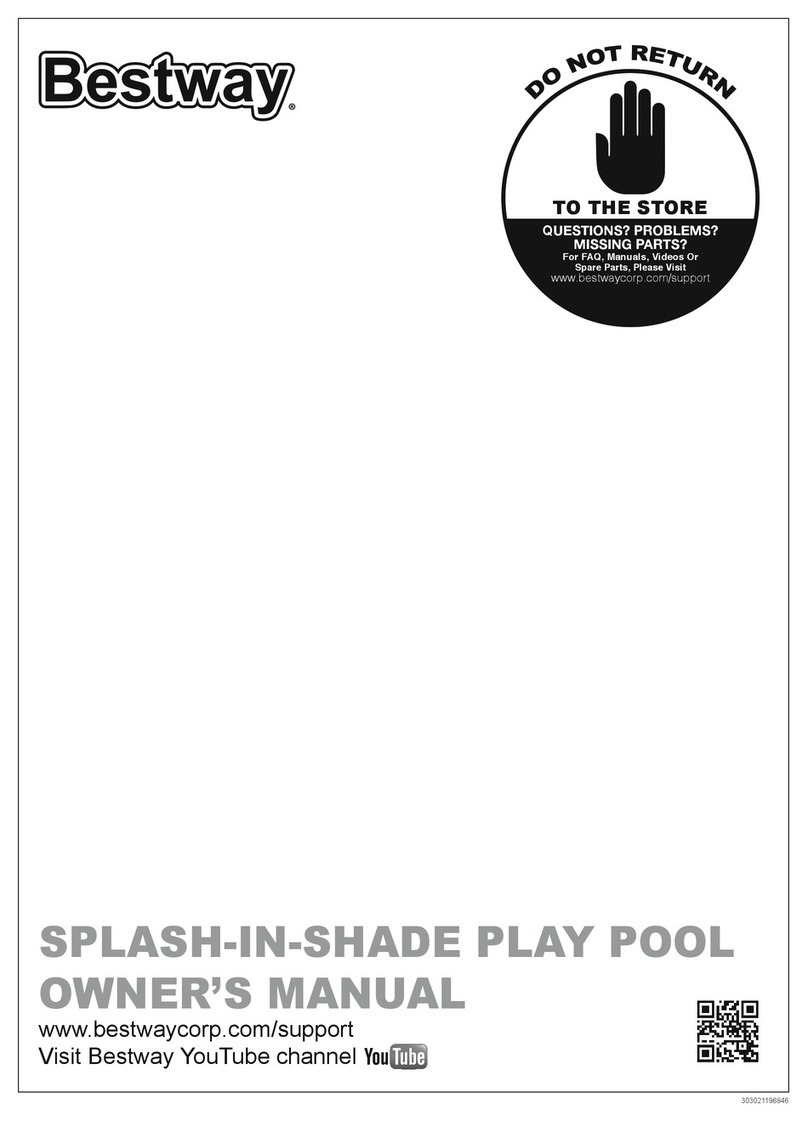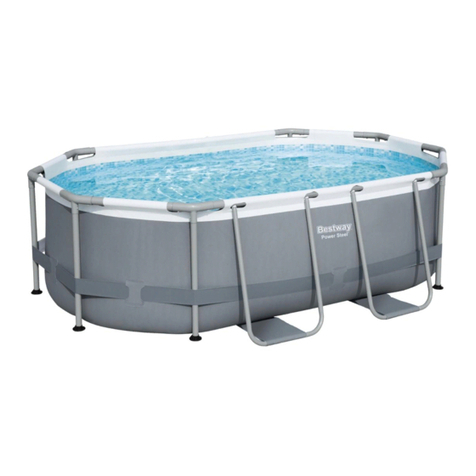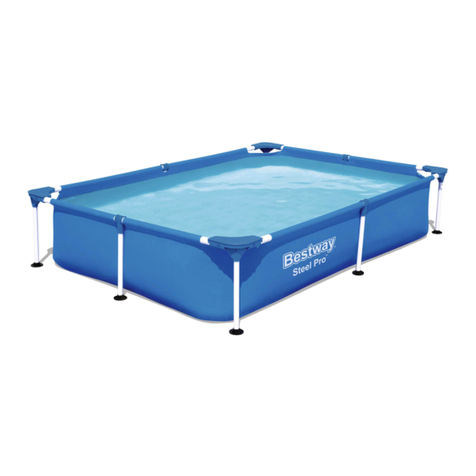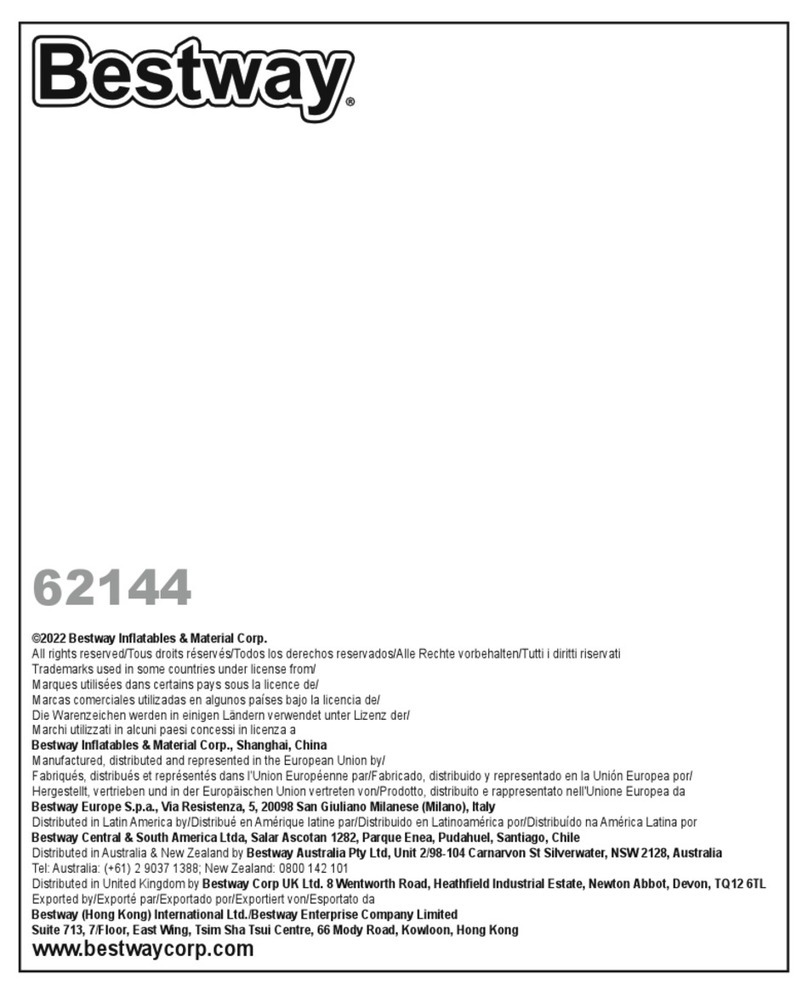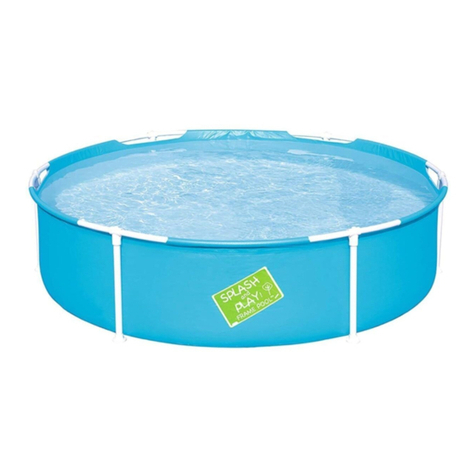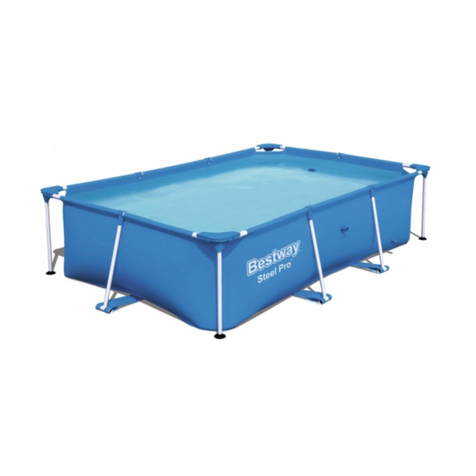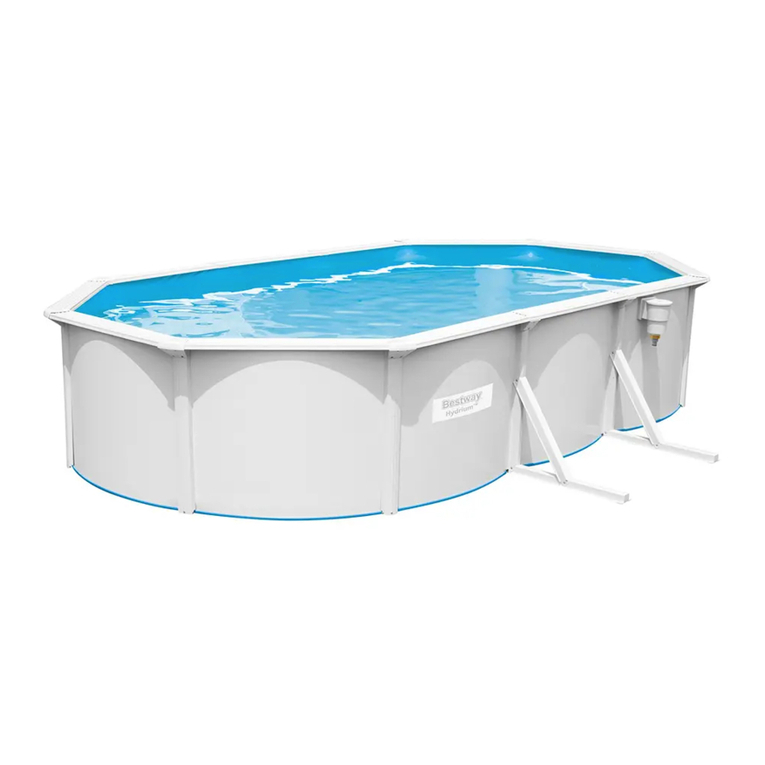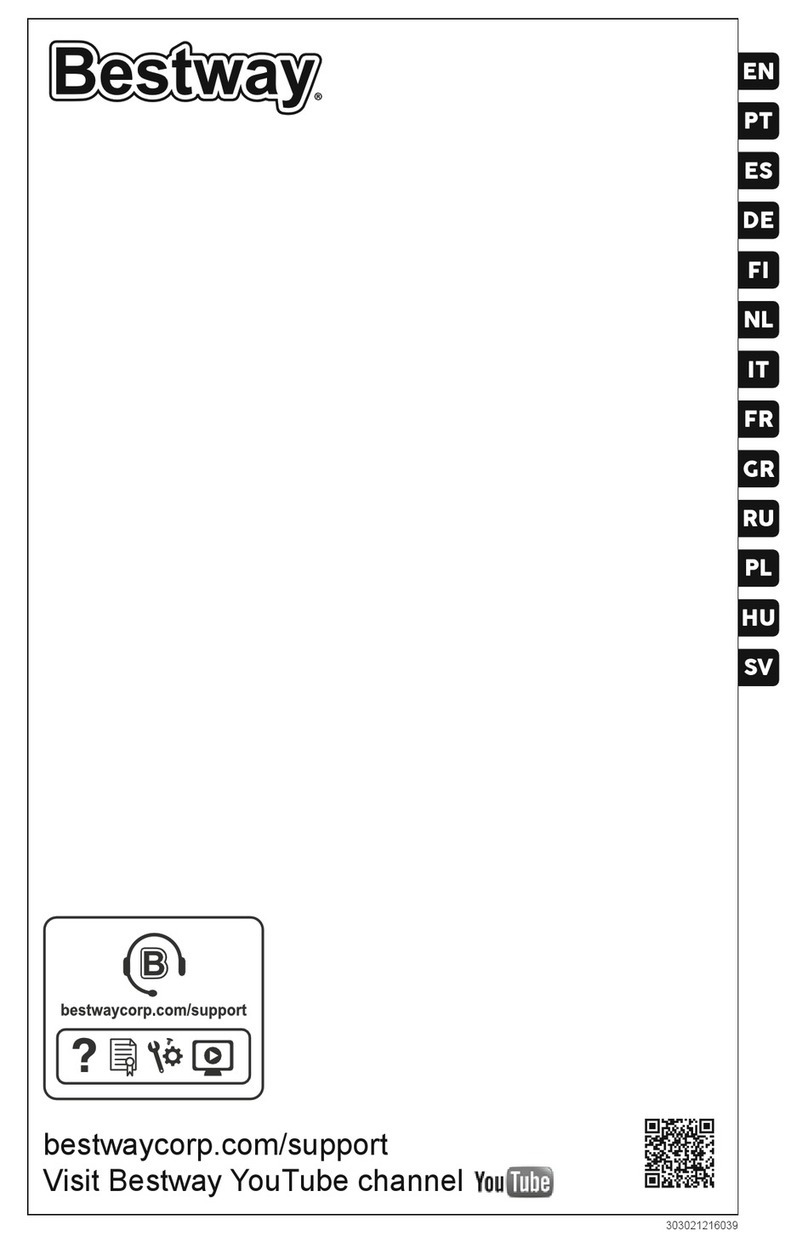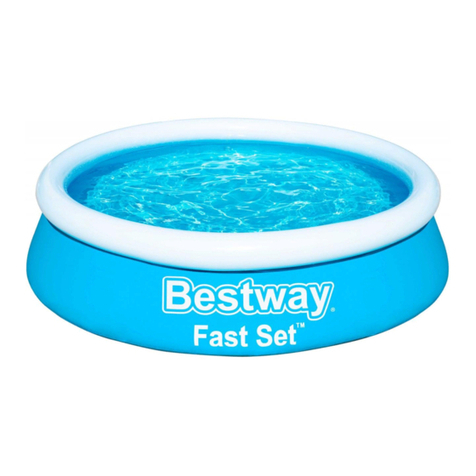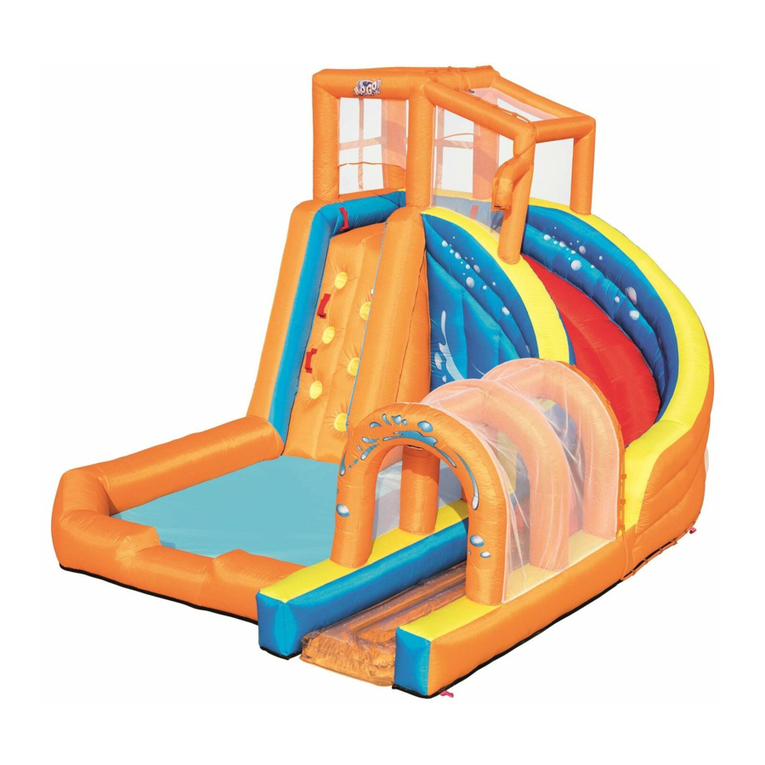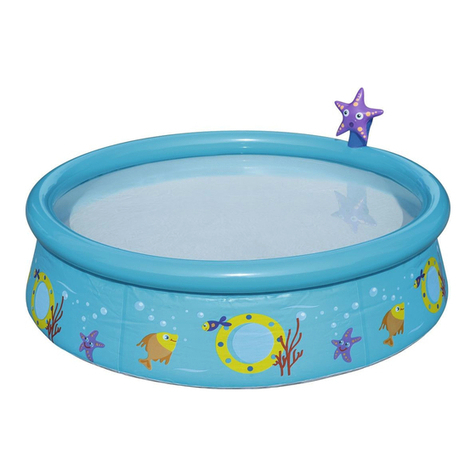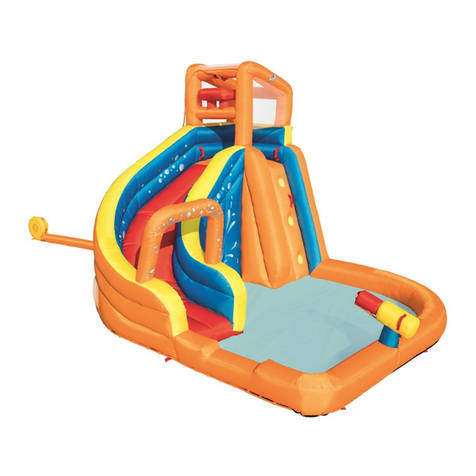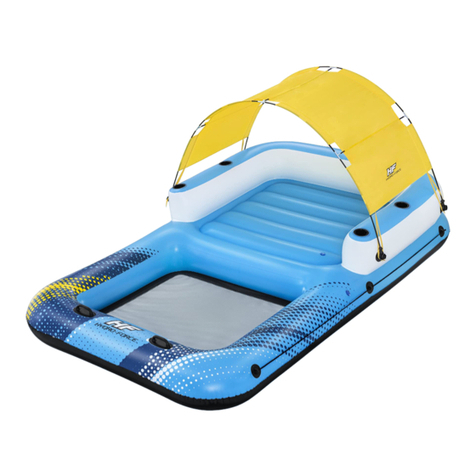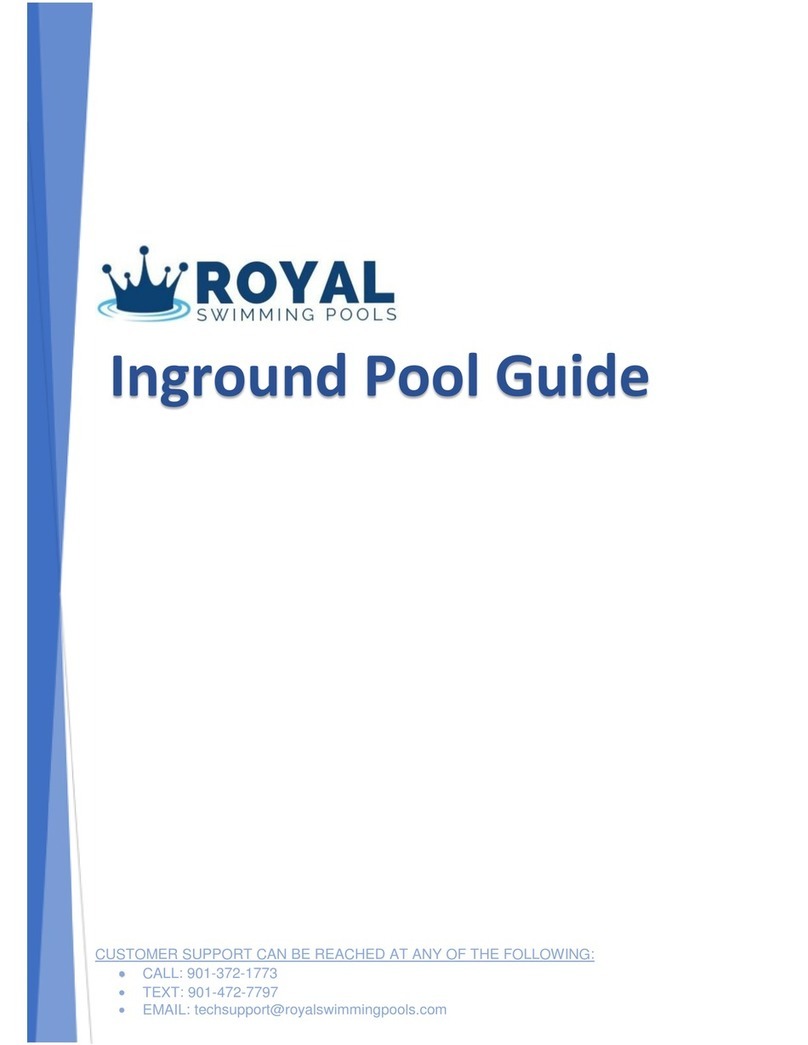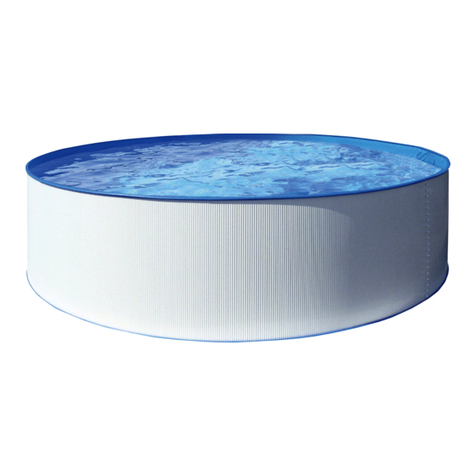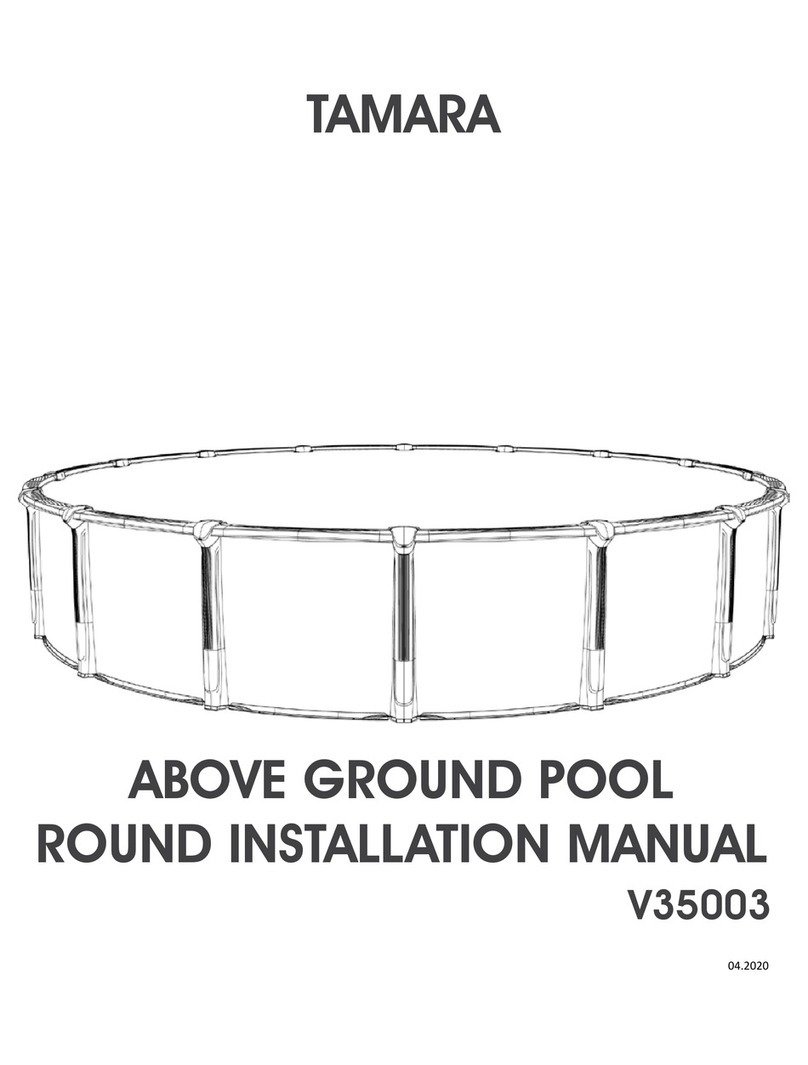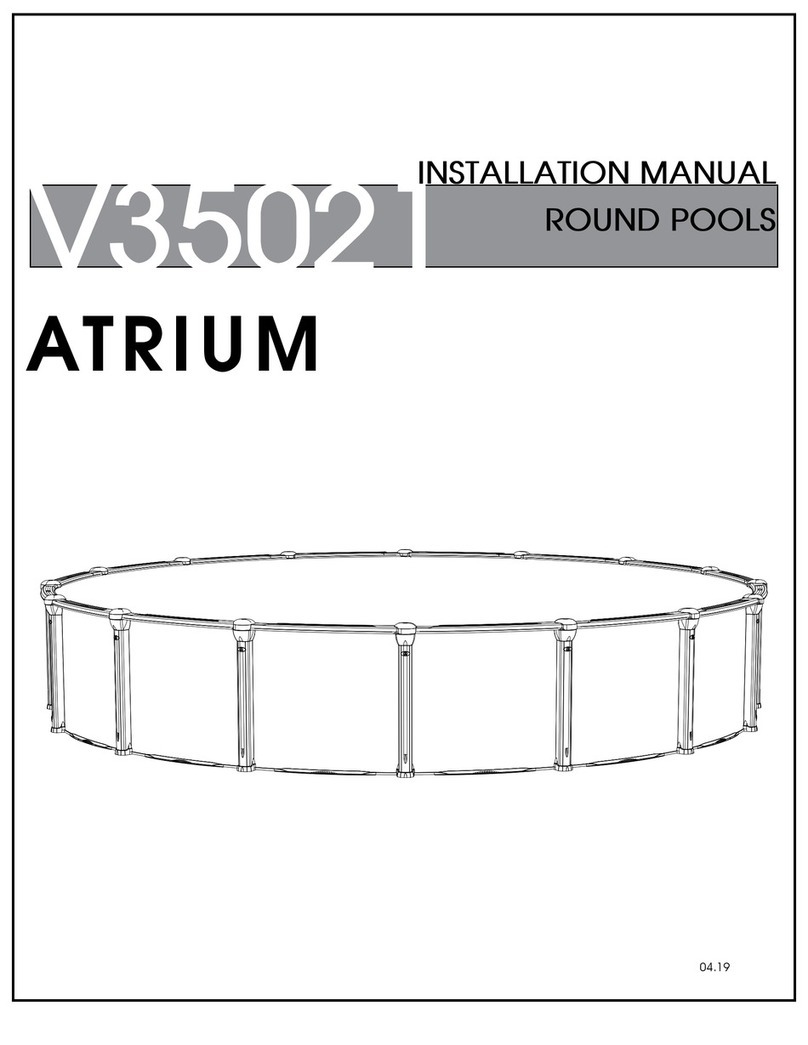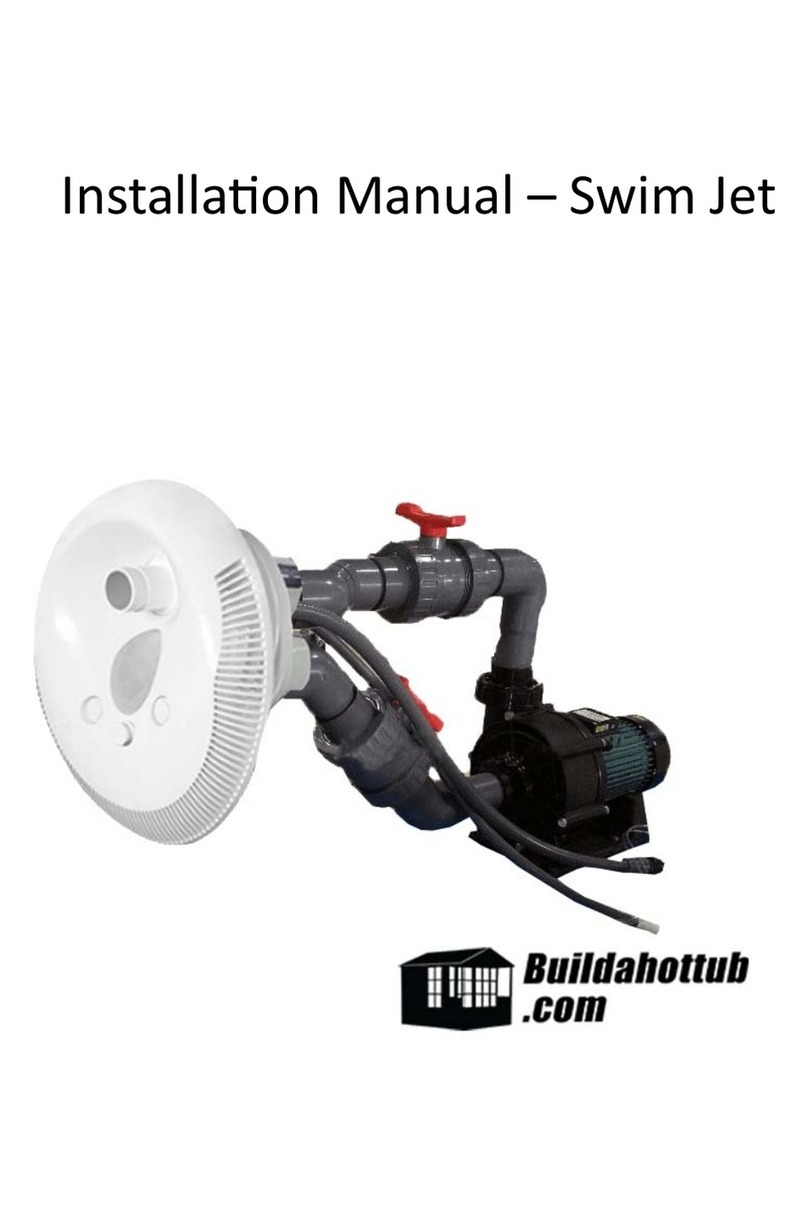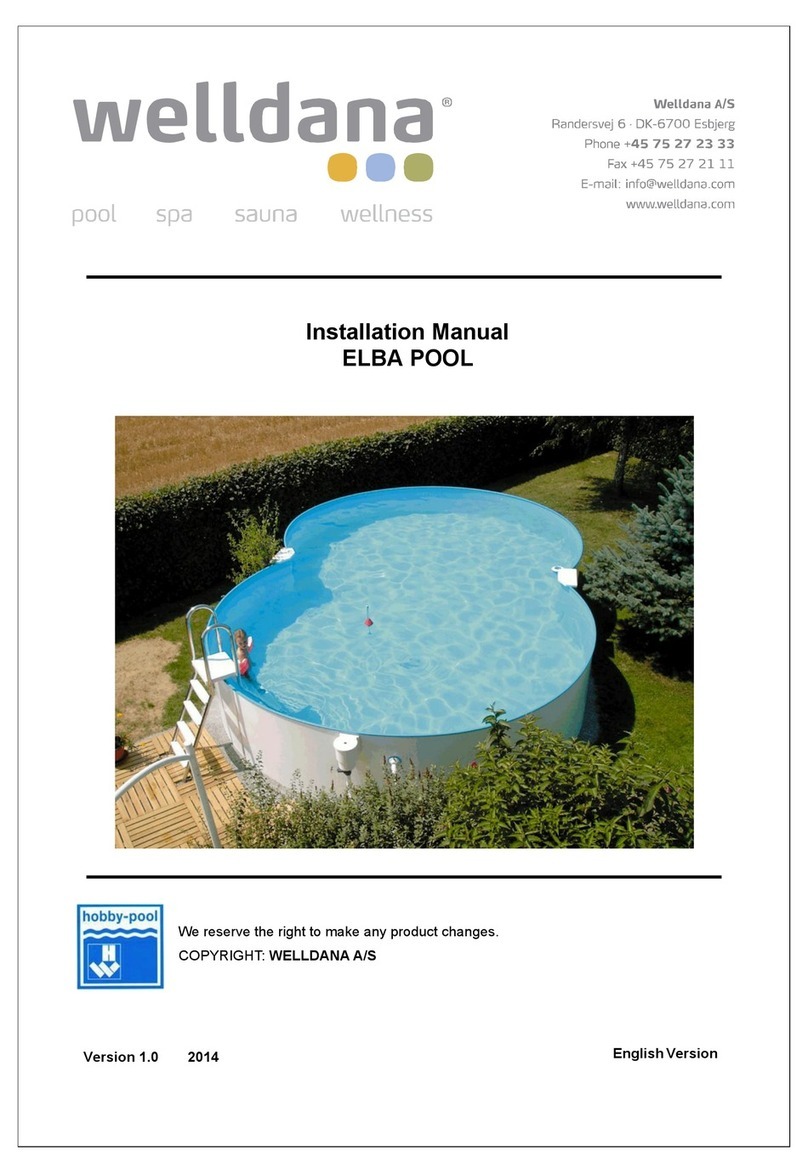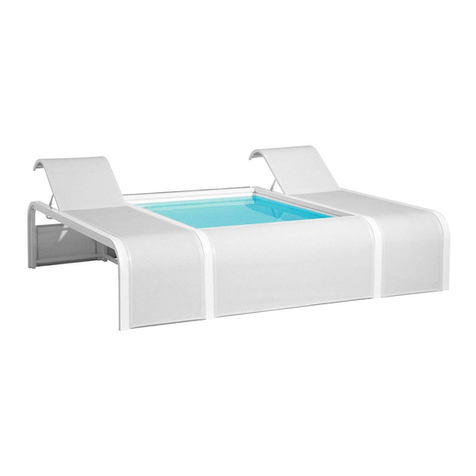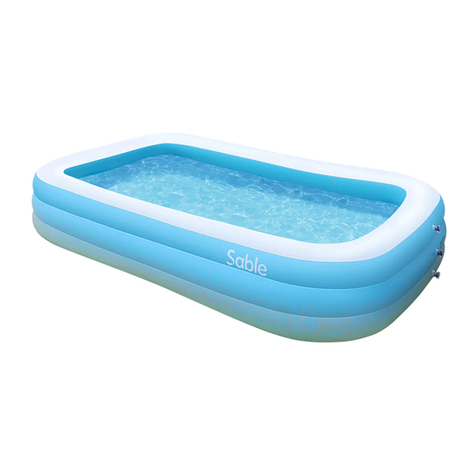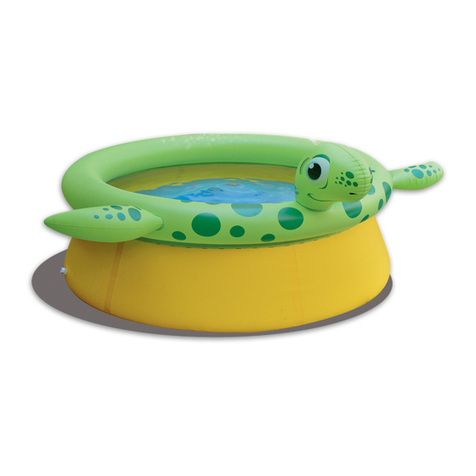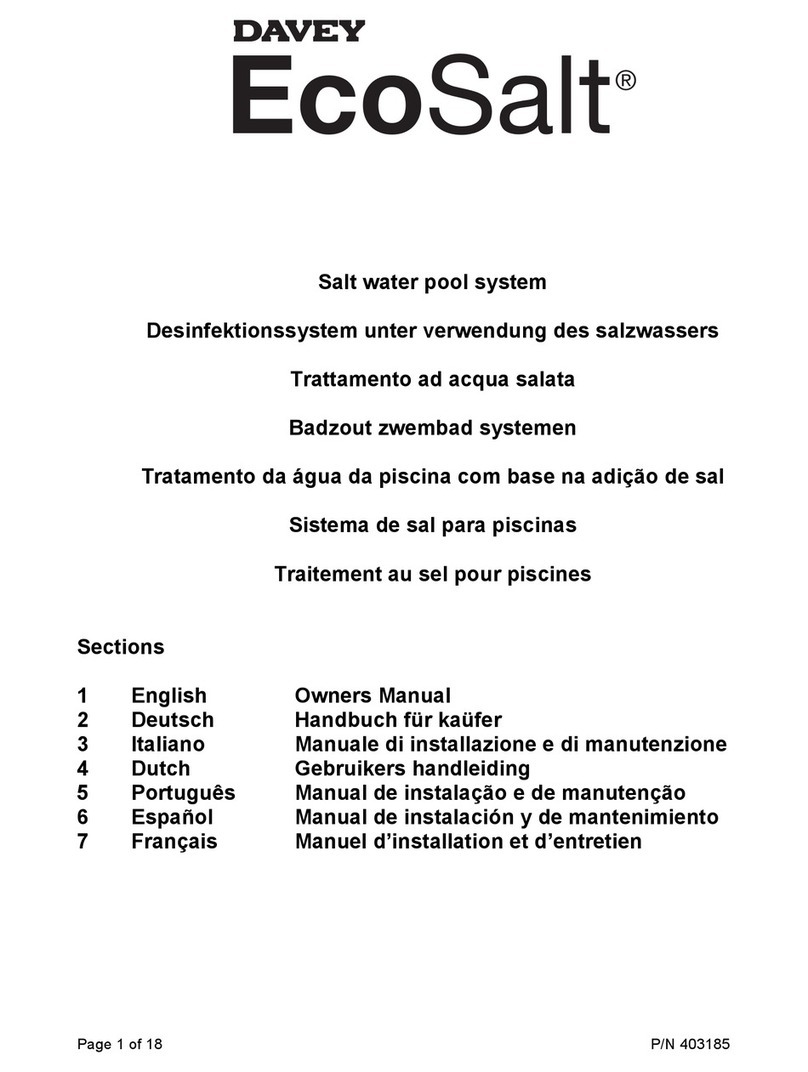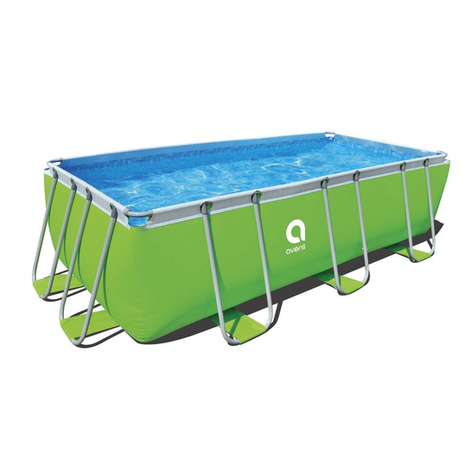
Only for outdoor use.
Teach your children to swim.
Never dive, jump, or slide into the pool.
Adult supervision is always required.
Parents should learn CPR.
Never swim alone.
- Keep all electrical radios, speakers and other appliances away from the
swimming pool.
- When you touch the filter, pump, or electrical parts, be sure the ground under
your feet is “Bone Dry.”
- All electrical outlets should have a GFCI and connections should be a
minimum of 5 feet (1.52 m) from the outside perimeter of the wall of the pool.
From 5–10 feet (1.52–3.05 m), there should be either a fixed connection
(outlet box) or twistlock connection with a GFCI.
- Connect power cords to a 3-wire grounding-type outlet only.
- Keep all breakable objects out of the pool area.
- Alcohol consumption and pool activities do not mix. Never allow anyone to
swim, dive or slide under the influence of alcohol or drugs.
- Severe electrical shock could result if you install your pump or filter on a
deck. The pump or filter could fall into the water, causing severe shock or
electrocution. Do not install on a deck or other surface at, above, or slightly
below the top rail of the pool.
- Do not use the pool during severe weather conditions, i.e. electrical storms,
tornadoes, etc.
- Be aware of overhead power lines when vacuuming your pool or using a
telescoping pole.
- Do not allow diving, climbing, sitting, or standing on the top rails of the pools.
- Do not allow roughhousing and horseplay.
- Do not engage in extended breath holding activities underwater; you may
black out and drown.
- Install a pool ladder(s) or staircase for entry and exit from the pool.
- Keep deck clean and clear of objects that may create a tripping hazard.
- Check regularly for signs of wear or loose bolts that could make the deck
unsafe.
- Instruct pool users about the proper use of all pool ladder(s) and staircases.
- Face ladder going up or down.
- Allow only one person at a time on the ladder.
- Check all nuts and bolts regularly to ensure that the ladder stays sturdy.
- Remove or secure the ladder to prevent entry to pool when not in use.
- Please contact pool site dealer or manufacturer for additional safety signs if
deemed necessary.
- For pool service, select a certified pool professional.
- Any equipment connected to the circulation systems shall be positioned so as
to prevent their being used as a means of access to the pool by young
children.
- The installation must comply with the codes of the authority having
jurisdiction and may require permits for building, plumbing electrical, zoning,
etc.
- The pool shall be located a minimum distance of 6 ft (1.83 m) from any
electrical receptacle.
- All 125 volt, 15 and 20 ampere receptacles located within 20 ft (6.0 m) of the
pool shall be protected by a ground fault circuit interrupter (GFCI). The 20 ft
(6 m) distance is measured via the shortest straight line distance the supply
cord would follow without piercing a floor, wall, ceiling, doorway, window, or
other permanent barrier.
- Prior to use of the pool, the installer shall affix all no diving signs and safety
signs in accordance with installation instructions so they can be easily visible.
- A barrier is necessary to provide protection against potential drowning and
near drowning and that barriers are not a substitute for the constant
supervision of children.
- A list of emergency telephone numbers shall be posted, such as the nearest
available police, fire, ambulance, and/or rescue unit. These numbers are to
be kept near the telephone that is closest to the pool.
- Toys, chairs, tables, or similar objects that a young child could climb shall be
at least 4 feet (1219 mm) from the pool. If deck is used by the installer, it will
need to comply with APSP-8.
- Basic lifesaving equipment, including one of the following, shall be on hand at
all times: a. A light, strong, rigid pole (shepherd’s crook) not less than 12 ft
(3.66 m) long. b. A minimum ¼ in. (6 mm) diameter rope as long as 1½ times
the maximum width of the pool or 50 feet (15.24 m), whichever is less, which
has been firmly attached to a Coast Guard-approved ring buoy, or a similarly
approved flotation devices.
- The swimming pool cover is not designated as a safety barrier.
- Please use artificial lighting during nighttime pool use, to illuminate all safety
signs, ladders, steps, deck surfaces and walks.
The pool is subject to wear and deterioration. If not maintained properly,
certain types of excessive or accelerated deterioration can lead to failure of
the pool structure that might release large quantities of water that could
cause bodily harm and property damage.
- The bottom of the pool shall be visible at all times from the outside perimeter
of the pool.
- The installer of the vinyl liner shall affix on the original or replacement liner, or
on the pool structure, all safety signs in accordance with the manufacturer’s
instructions. If have a filter pump, refer to the pump’s manual for instructions.
- The ladder shall be located on a solid base and the ladder shall be installed
per the ladder’s instructions.
- Publications are available that describe the risk of drowning, entrapment, and
diving accidents.
- Available publications related to pool safety include the Association of Pool
and Spa Professionals’ (APSP) booklets entitled: The Sensible Way to Enjoy
Your Aboveground/Onground Swimming Pool, Children Aren’t Waterproof,
Pool and Spa Emergency Procedures for Infants and Children, Layers of
Protection, and the latest published edition of ANSI/APSP-8 Model Barrier
Code for Residential Swimming Pools, Spas, and Hot Tubs.
Please read carefully and keep for future reference
01 02 03
04 05 06
07 08
09
10 11 1312
14 15 16
17 18 19
Parts Reference
3
WARNING
PREVENT
DROWNING
Watch children at all times.
WARNING
NO DIVING!
You can be permanently injured.
Shallow water.

















